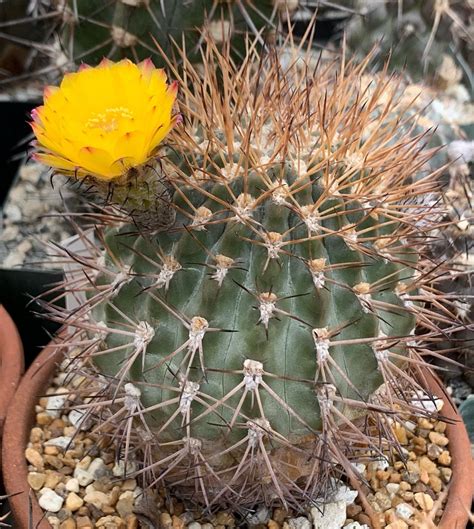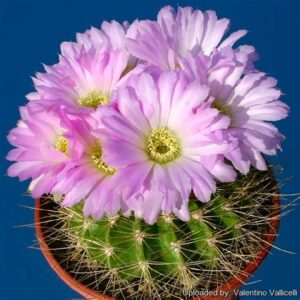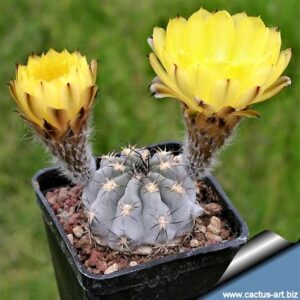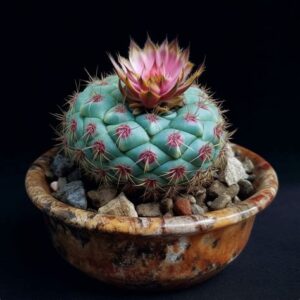When it comes to caring for succulent plants, one of the most crucial aspects is understanding their watering needs. Acanthocalycium thionanthum, commonly revered among cactus aficionados, is no exception. This species presents unique characteristics that determine its care, particularly in regards to how often it should be watered.
Acanthocalycium thionanthum is a fascinating specimen from the Cactaceae family, known for its beautiful and striking appearance. The proper frequency of watering can greatly impact its health and growth. To ensure that you provide your Acanthocalycium thionanthum with the optimal conditions for flourishing, it is essential to consider environmental factors, growth stages, and specific watering techniques.
Understanding the Native Habitat
Before diving into the specifics of watering frequency, it’s important to grasp the natural habitat of the Acanthocalycium thionanthum. This cactus hails from arid regions of South America, an environment characterized by low humidity and intense sunlight. In these natural conditions, rain falls infrequently and in short bursts, leading to soil that dries out quickly.
Therefore, mimicking these conditions in cultivation is vital. Familiarity with its native habitat allows you to grasp how the plant has adapted to efficiently manage water intake. The Acanthocalycium thrives in well-draining soil that allows excess moisture to escape rapidly, minimizing the risk of rot—a common enemy of succulent plants.
Factors that Influence Watering Frequency
A myriad of factors can affect how often you should water your Acanthocalycium thionanthum. Each one plays a significant role in determining the specific hydration needs of your cactus. Key factors include:
Soil Composition
The type of soil in which your cactus is planted directly influences its watering schedule. A well-draining succulent or cactus mix is essential. This not only allows for proper moisture retention but facilitates excess water to drain efficiently. If the soil is heavy or retains too much moisture, more frequent watering may lead to root rot. Conversely, soil that drains too quickly may require more regular watering to sustain the plant.
Environmental Conditions
Environmental factors, such as temperature, humidity, and light exposure, play a pivotal role in dictating how frequently water should be applied. During hot, dry periods, your Acanthocalycium thionanthum may require more frequent hydration as it will be losing moisture rapidly. In cooler months, or in high humidity environments, watering intervals should be extended. This adaptability is key to the cactus’s survival and health.
Growth Stage
Similarly, the growth stage of your cactus also affects watering frequency. When actively growing during the spring and summer, Acanthocalycium thionanthum will require more water compared to its dormancy period in the fall and winter months. Understanding when your cactus is in its growth phase versus dormancy will help optimize your watering schedule.
Signs of Underwatering and Overwatering
Recognizing the signs of both underwatering and overwatering is paramount in maintaining the health of your Acanthocalycium thionanthum. The following section details key indicators to watch for, which will guide adjustments to your watering regimen.
Underwatering Symptoms
Signs of underwatering can manifest in several ways:
- Wrinkled Skin: The most noticeable sign of underwatering is wrinkling or shriveling of the cactus’s skin, indicating moisture depletion.
- Color Change: Acanthocalycium thionanthum may shift from its vibrant green to a dull or pale hue as it struggles to retain moisture.
- Stunted Growth: If your cactus appears to be growing slowly or not at all during its active growth phase, it may be craving water.
Overwatering Symptoms
On the flip side, overwatering can be equally detrimental:
- Soft or Mushy Texture: If the plant feels soft or squishy to the touch, this indicates excess moisture and potential rot.
- Yellowing: Leaves or stems that turn yellow are often sources of concern, suggesting root health is compromised.
- Foul Odor: An unpleasant smell emanating from the soil can indicate rot and decay, necessitating immediate action.
Optimal Watering Practices
With a clear understanding of environmental factors and the signs of proper hydration, it’s crucial to hone in on effective watering techniques. Here are best practices to ensure your Acanthocalycium thionanthum thrives:
Water Deeply but Infrequently
When the time comes to water, it is typically advised to do so deeply rather than frequently. This means allowing water to saturate the soil thoroughly, ensuring that moisture reaches the root system. However, it’s essential to allow the soil to dry out completely between waterings. This practice not only prevents root rot but promotes healthy root growth.
Utilize the Soak and Dry Method
The soak and dry method is a practical approach when caring for cacti. When water is applied, it should run through the drainage holes of the pot. This ensures the roots receive adequate hydration while the excess escapes. Monitor the soil moisture periodically; when the top inch or so feels dry to the touch, it’s time for another watering.
Seasonal Adjustments
As stated earlier, seasonal changes can affect watering needs. During the active growing season, typically spring and summer, increase the frequency. A schedule of every two weeks may suffice, but always assess individual circumstances. In contrast, during the dormant period in the fall and winter, reduce waterings to once a month or even less, depending on environmental conditions.
Conclusion
In summary, adequately caring for your Acanthocalycium thionanthum hinges on understanding its unique watering needs in relation to its native habitat, environmental conditions, and growth stage. Balancing the signs of underwatering and overwatering, coupled with optimal watering techniques, will ensure your cactus thrives beautifully in your care. By maintaining vigilance and making seasonal adjustments, you can master the art of watering, securing a vibrant and healthy Acanthocalycium thionanthum for years to come.





Leave a Comment